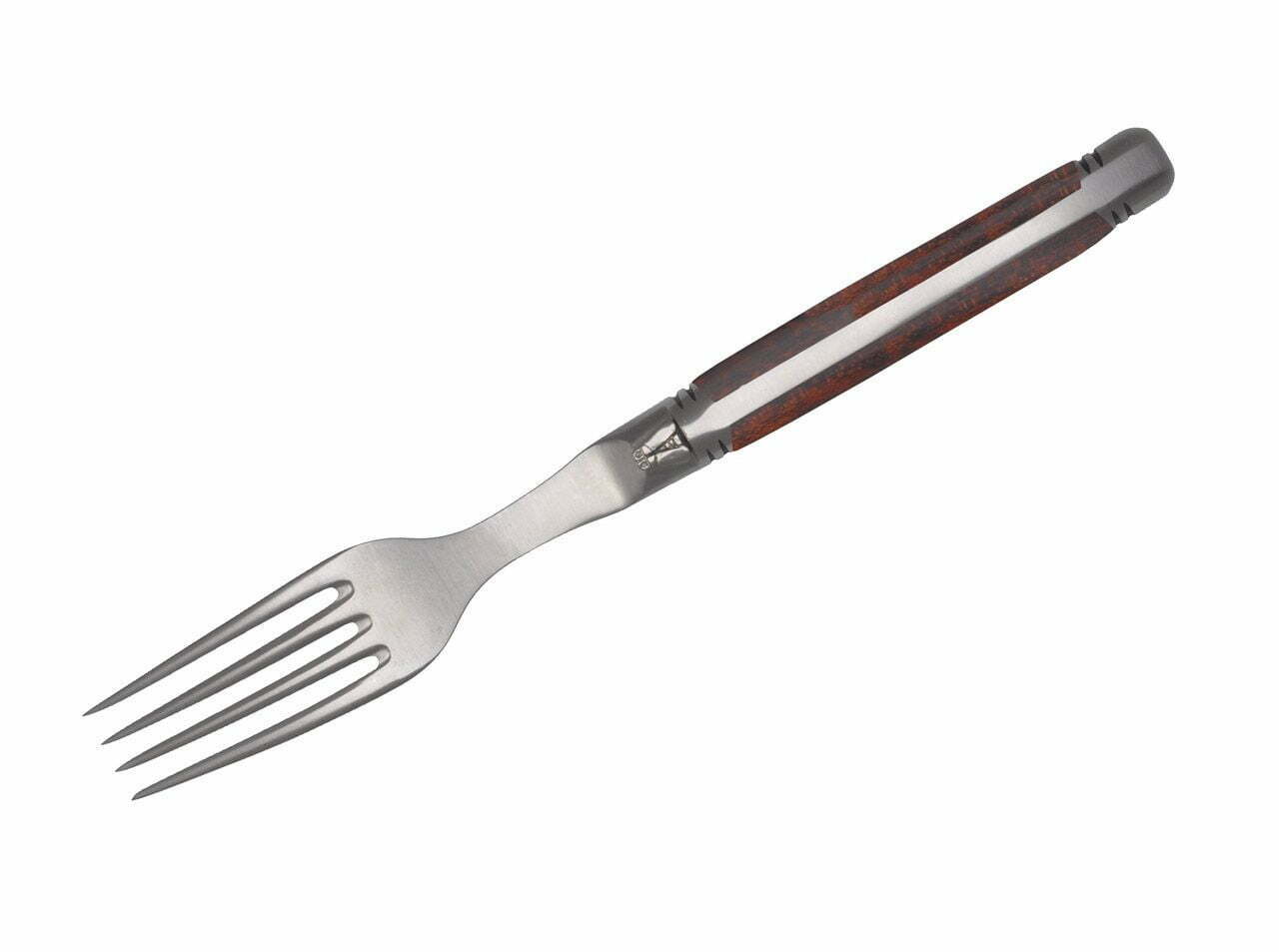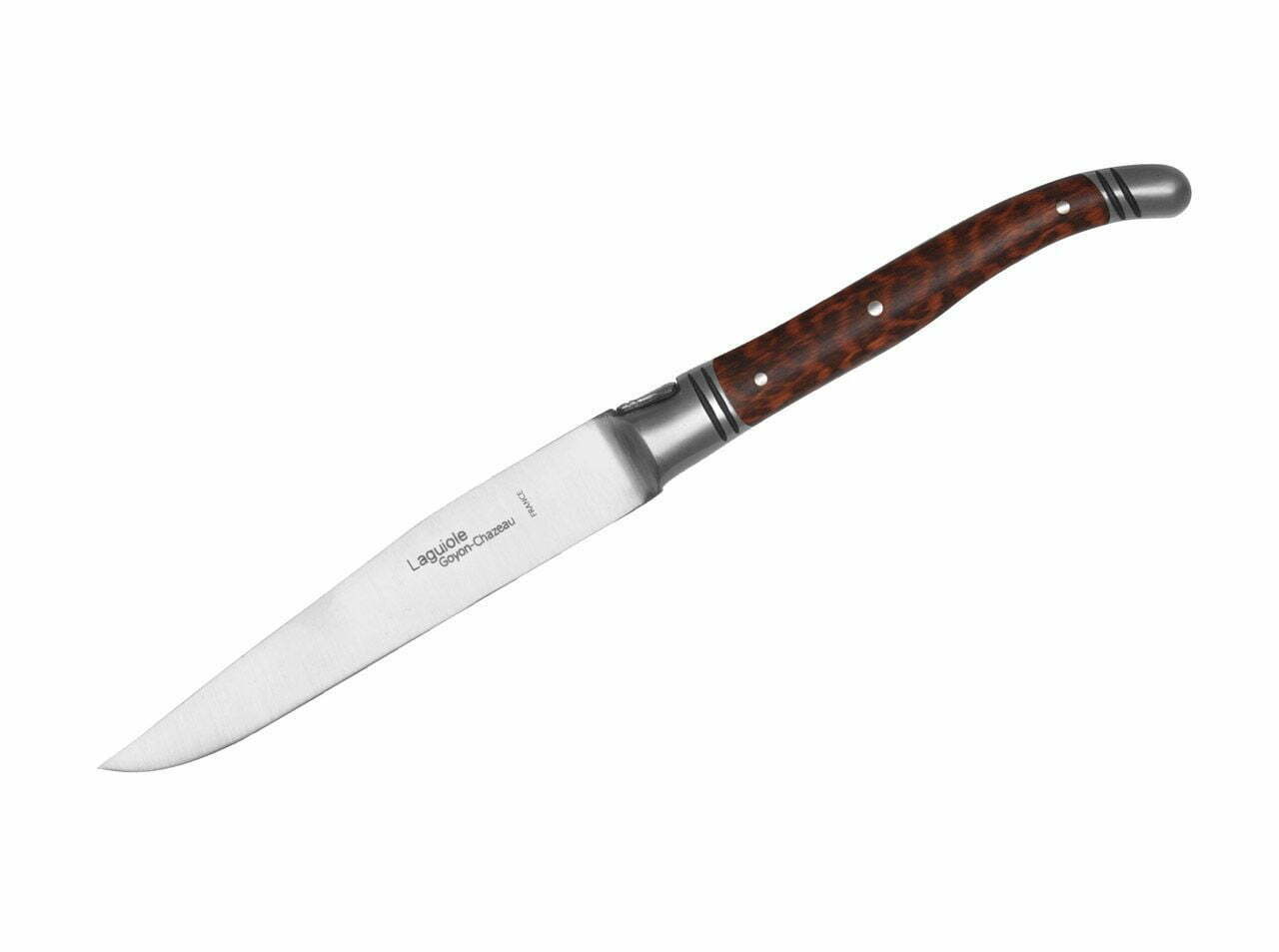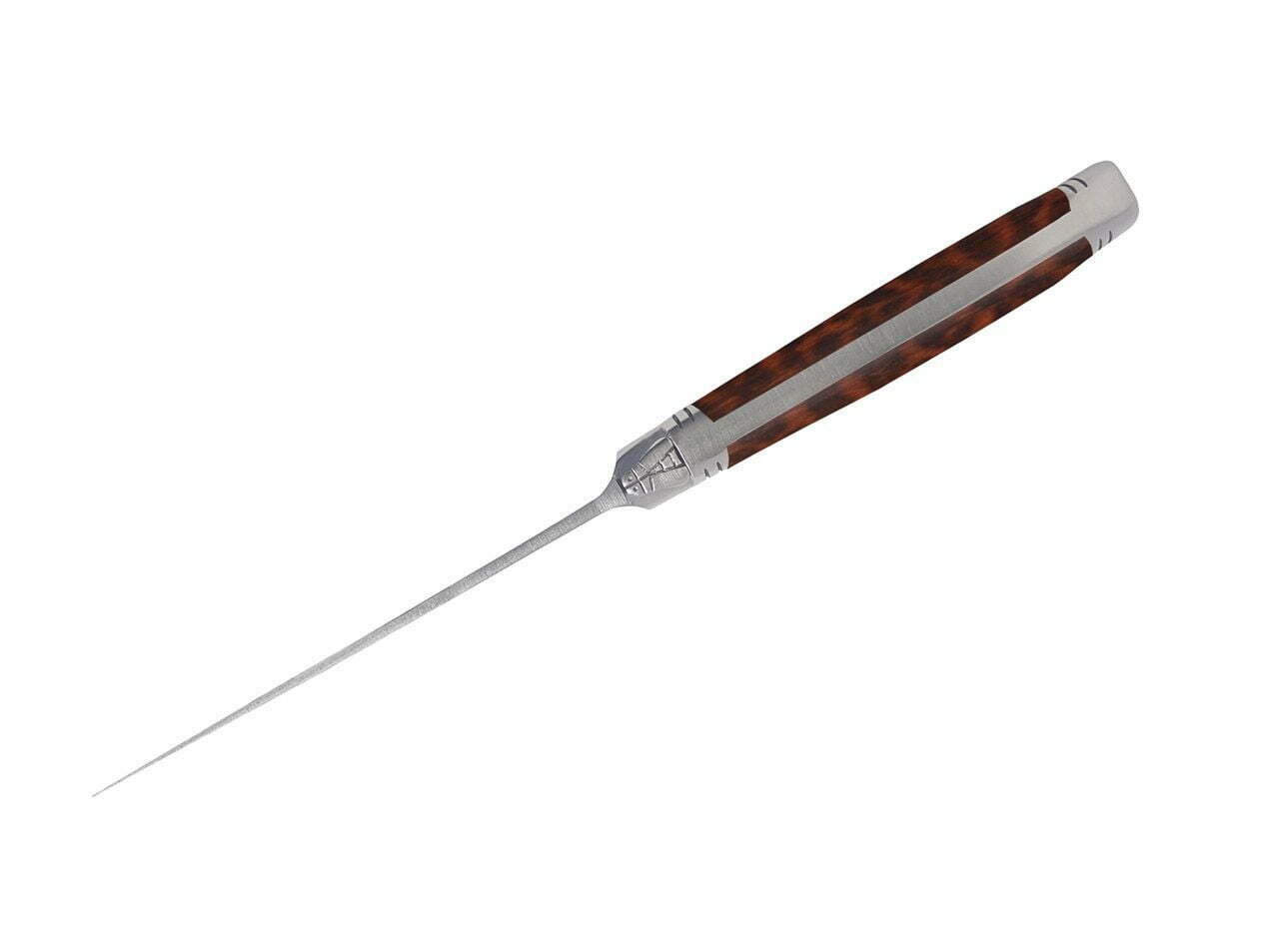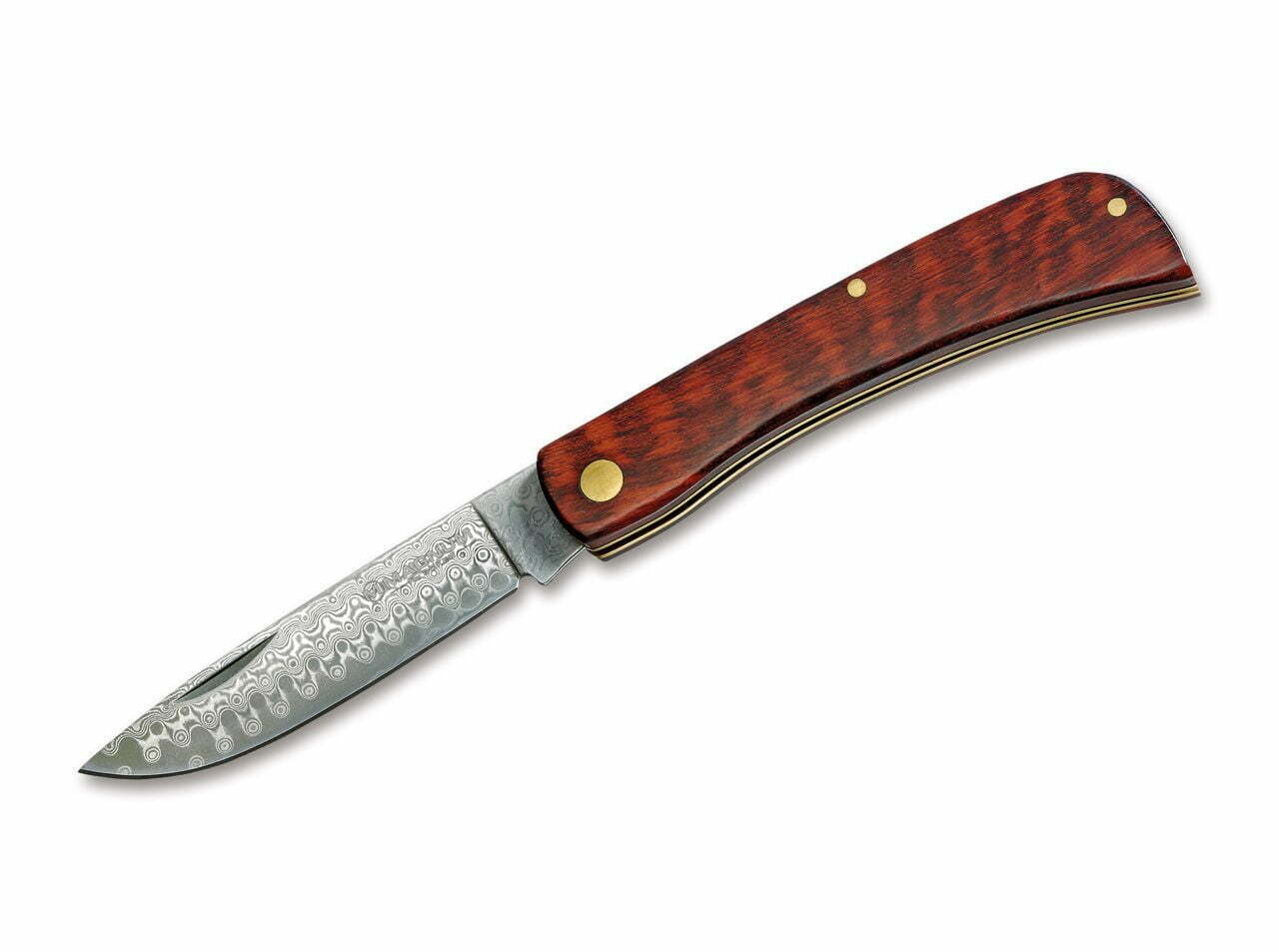Snakewood is one of the finest and most expensive woods of the world. It has a striking pattern reminiscent of snakeskin and is extremely hard. In the knife industry, snakewood is used to make exquisite handle scales.
The name snakewood is used for several different plant species and their wood. In terms of knife handles, the name refers to the wood of the species Piratinera guianensis (also known as Brosimum guianense), a member of the mulberry family (Moracea). Piratinera guianensis is an evergreen deciduous tree that can grow up to 45 meters tall. Its geographic range reaches from Brazil to Mexico. The plant derives its affix from Guyana in South America.
The population is concentrated in neighboring Surinam. The wood of the Piratinera guianensis is called snakewood because of the appearance of the reddish-brown hardwood in its dried and processed state. Its strong, striking pattern looks like snakeskin but is also reminiscent of leopard skin or Egyptian hieroglyphics, which is why it is sometimes called “letterwood”. The yellow/white sapwood is not used in the production of high-quality objects.
Snakewood has irregular fibers and scattered pores. The dense wood has a fine texture. Snakewood is difficult to dry and just as difficult to process. It loses some of its quality during the drying process and dulls even the best tools very quickly Moreover, this type of wood must be finished and glued with great care. When it is treated correctly, snakewood is not just extremely attractive but also very durable.
For centuries, it has been used to make luxurious objects, including veneers, violin bows, drumsticks, buttons and walking sticks as well as umbrella and knife handles.
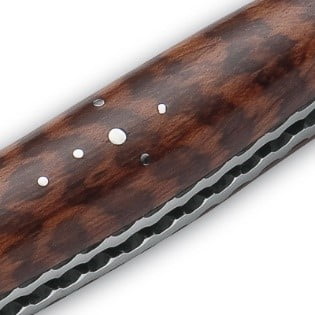
Showing all 3 resultsSorted by popularity

